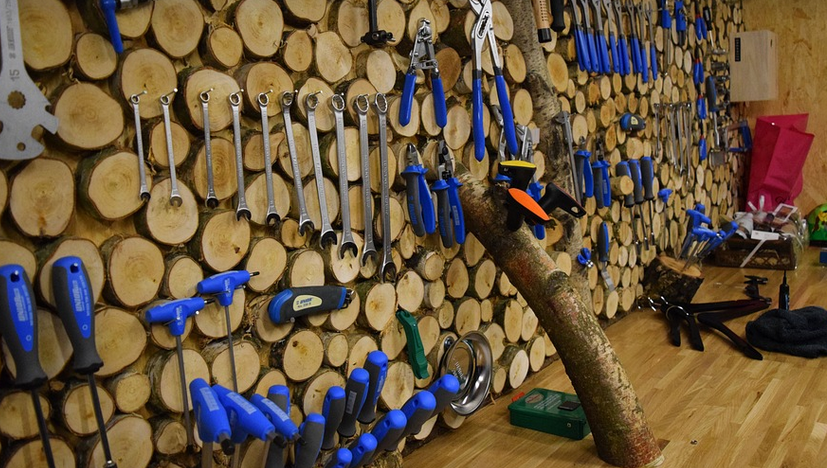
What is a Mulching Blade?
Mulching blades, those unsung heroes of the garden world, are designed to slice through the toughest vegetation with ease. Whether you’re tackling thick brush in your backyard or clearing out pesky weeds from tight spaces, these blades offer a more efficient approach than traditional tools.
But even the most durable mulching blades eventually wear down with regular use. Over time, their sharp edges lose their cutting power and can become dull. Dull blades are harder to work with, require more energy to maneuver, and often leave behind uneven cuts that can damage your plants or landscaping.
Why Do We Need To Sharpen Our Mulching Blades?
Sharpening a mulching blade is not just about restoring its sharpness; it’s about ensuring optimal performance and extending the life of your valuable tool. The process of sharpening increases efficiency, saves time and fuel, reduces the risk of injury, and ultimately leads to more beautiful landscaping.
Here’s a closer look at the benefits:
- Increased Efficiency: A properly sharpened blade will cut through vegetation with less force and effort, saving you time and energy.
- Reduced Damage to Plants: Sharper blades make cleaner cuts, minimizing damage to the surrounding plants or landscaping.
- Improved Safety: Sharpened blades are easier to control, leading to safer operation, especially when working with larger branches and thick vegetation.
Think of it as giving your blade a tune-up – just like you would for your car. It’s an investment that pays dividends in the long run.
The Importance of Proper Sharpening
The quality of your mulching blade directly correlates with the overall success of your gardening endeavors. A sharp blade is crucial for achieving smooth, clean cuts and maximizing efficiency. Imagine trying to cut through a rope tied around a tree trunk with a dull knife – it would be an arduous task, right? That’s exactly what happens when you try to use a dull mulching blade.
However, proper sharpening goes beyond just creating a sharp edge on the blade. It involves ensuring that the blade has the correct angle and is properly maintained for optimal performance:
Sharpening Techniques:
There are various methods to sharpen a mulching blade. Each method requires understanding how the blade works, the type of material it’s made from, and your desired level of sharpness.
Here are some popular sharpening techniques:
- Sharpening with a File: This is one of the most common methods for home users. You can use a file to sharpen the blade by running it along the edge of the blade, creating a sharper point.
- Belt Grinder Method: Using a belt grinder offers better control and precision for sharpening blades with specialized tools.
Sharpening Supplies:
Before you begin sharpening, make sure you have the right supplies on hand. These include:
* **Fine-grit Sandpaper:** Start with coarse grit (60-100) and work your way to finer grits (220). This helps remove existing burrs and build a smooth edge. * **Honing Steel:** Used to refine the blade’s edge while sharpening. The honing steel works by aligning the blade’s angle for ultimate sharpness * **Sharpening Stone:** For a more traditional approach, choose a sharpening stone with a variety of grits (100-400) for different levels of refinement. * **Sharpeners or Grinding Tools: If you’re using a manual grinder, make sure you have the correct type and size of tools for your blade.
Step-by-Step Guide to Sharpening Your Mulching Blade
While we can’t delve into all the methods here, let’s explore a basic guide that will give you a foundational understanding.
1. Safety First:
Always wear safety glasses and gloves when working with blades. It’s a good idea to use a cutting mat for added protection, especially during the sharpening process.
2. Preparation:
Before you even start sharpening, ensure your blade is free of debris. Clean away any dirt or grass that might clog the sharpening process. It’s also advisable to choose the appropriate angle and direction for sharpening based on your specific blade type.
3. Sharpening:
Use a sharp, straight, consistent motion when sharpening. Focus on achieving a smooth, refined edge with each pass of your sharpener or stone.
4. Honing:
After sharpening, give the blade a light honing to true it up. This involves running the blade along a honing steel, ensuring that the edge stays properly aligned.
5. Testing:
Once you feel comfortable with your sharpened blade, test its sharpness on a scrap of wood. If needed, continue honing until you achieve a clean cut without any resistance.
Maintaining Your Blades:
Sharpening is only part of the story; regular maintenance ensures longevity and optimal performance. Here are some tips:
* **After each use:** Rinse your blade with water to remove any debris or grass clippings. This prevents rust and buildup over time. * **Periodically clean and inspect:** Check for any signs of wear and tear, such as dullness. Use a high-quality blade oil if needed to help protect the blade during storage * **Proper storage: Store your blades in a dry, well-ventilated area when not in use! This prevents rust and degradation, ensuring they’re ready for your next project.
Conclusion:
Sharpening your mulching blade is an investment that pays off in spades. It’s an essential part of maintaining a sharp and effective workhorse, enabling you to tackle any task with ease and confidence. Remember, sharpening isn’t just about getting the most out of your blades – it’s also about taking pride in your work.